Last updated: November 18th, 2025
Transferring at an airport for your next connecting flight can sometimes be a troubling experience, especially if the layover/transfer time is short and you’re not really familiar with the airport. In the absence of ground staff guiding you to your departure gate, it can be arduous and stressful at times to navigate the airport in order to find the gate. Normally, the layover should give you enough time to arrive at the gate and board your next flight. Yet, there can be possibilities that due to some circumstances, you’re still not onboard after the final boarding call such that you are removed from your flight and rescheduled to the next flight. This is, of course, not a desirable outcome.
Having a map of the airport, especially the locations of transfer area and departure/boarding gates, is a very handy way of getting the grasp of the airport layout and planning on how you can spend the time at the airport. And yes, it’s exactly what we are going to do in this article.
If you’re looking for some first-hand guide on navigating Hong Kong airport for your next Hong Kong layover and departure, this article is for you.
Hong Kong Airport at a Glance
Hong Kong International Airport (HKIA) was first opened in 1998. The airport has been undergoing several expansion projects to increase passenger and cargo capacity. Nowadays, Hong Kong international airport occupies an area of 1,905 hectares or 4,707 acres. The airport operates three runways and serves passengers in two terminals, namely Terminal 1 and Terminal 2. The third runway was just recently completed and became operational in 2024. Due to Terminal 2 expansion project that’s still underway, only Terminal 1 is effectively being used.
Hong Kong airport Terminal 1 is one of the biggest airport terminal buildings in the world. It occupies an area of 771,650 square meters or 190 acres. Terminal 1 building consists of the main building, Sky Bridge, Terminal 1 Satellite Concourse, and Terminal 1 midfield concourse.
In the figure below, you can see the aerial layout of Hong Kong airport. As depicted in figure, Terminal 1 and Terminal 2 are located side by side. Even though the third runway, which is the North runway, has been operational, Terminal 2 expansion project to expand the main building and construct a new concourse is still currently under development. The expansion area in the map is designated to be the new Terminal 2 concourse with construction expected to be completed by 2030.
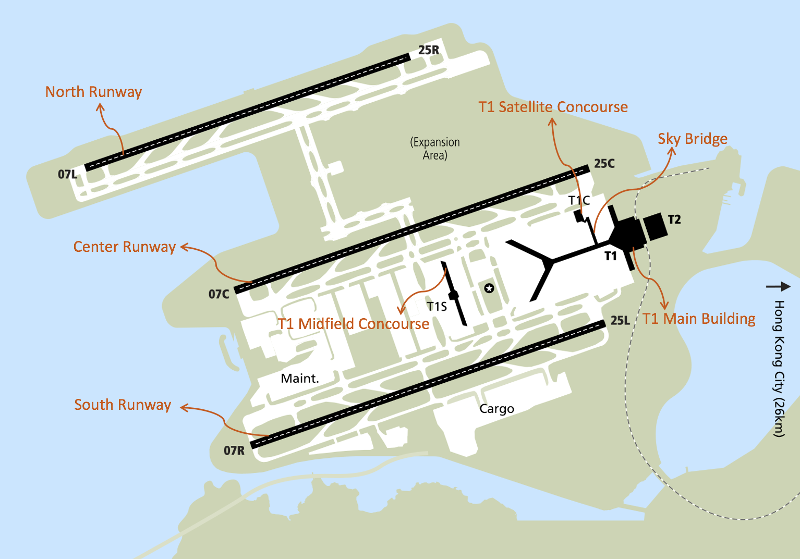
If you transfer or depart from Hong Kong airport, you will board the plane at Terminal 1. Your aircraft will be parked on the apron adjacent to the concourses belonged to Terminal 1: the Y-shaped like Terminal 1 main concourse, Terminal 1 satellite concourse, or Terminal 1 midfield concourse. Only the main concourse is part of Terminal 1 main building. Terminal 1 satellite concourse is detached from the main building and makes use of the Sky Bridge to connect it to the main building. On the other hand, Terminal 1 midfield concourse utilizes Automated People Mover (APM) train to move passengers from Terminal 1 main building to the concourse and vice versa.
Hong Kong Airport Floor Plan for Departure
Hong Kong airport adopts vertical stacking of arrivals and departures. If your flight lands at Hong Kong airport, you will disembark from the aircraft on the arrival-transfer level. Similarly, when your flight depart from Hong Kong airport, you will board the plane on the departure level. Gate numbers are also stacked vertically for arrival-transfer and departure. Therefore, an arrival-transfer gate number X at Hong Kong airport is located on the same point in the airport map with departure gate number X despite different floors / levels.
In the figure below, you can see the floor plan for transfer at or departure from Hong Kong airport.
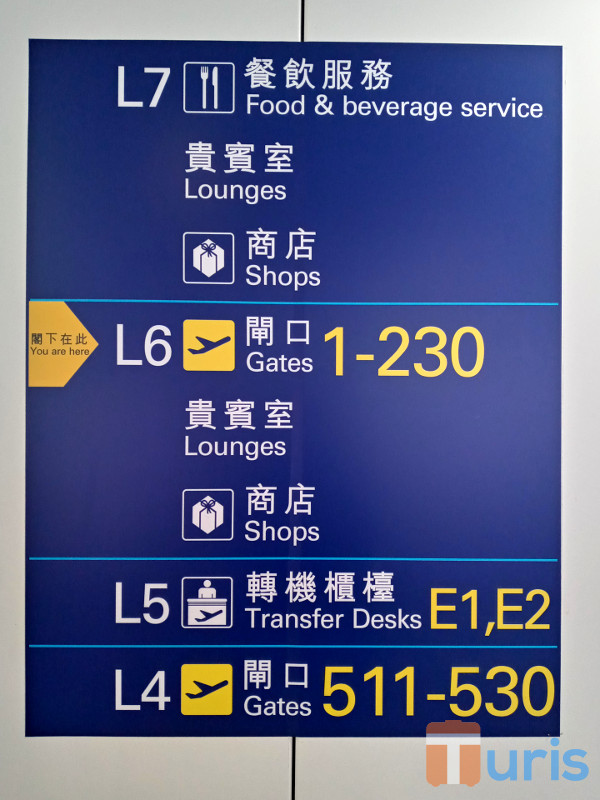
Level 7 (L7) is the departure hall level on the landside and food/lounge/shop level on the airside. When you check-in for your flight departing from Hong Kong airport, you do the check-in at a counter located in the departure hall, which is on Level 7. Once you clear the security check and immigration, you will enter the airside area on the same floor/level, which is Level 7. To go to the departure gate, you need to take the escalator or elevator to go down one level to Level 6. Most departure gates are located on Level 6 (L6), with few exceptions on Level 4 (L4).
Related: Check-in counter locations for airlines operating at Hong Kong Airport
When arriving or transferring at Hong Kong airport, you will deplane and enter the arriving passenger corridor through an arrival-transfer gate located on Level 5 (L5). Immigration counters and transfer area are also located on this level. Pay attention to the overhead sign boards installed along the passage that provide you with the direction to the immigration counters or transfer area upon your arrival.
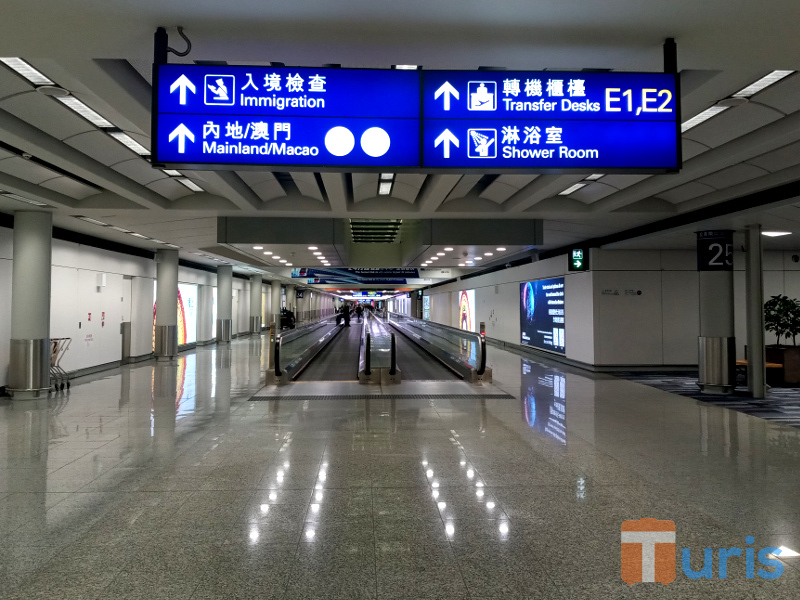
If you want to enter Hong Kong after arriving at Hong Kong airport, you will need to clear immigration. Prepare your travel document and present to the immigration officer for verification. You do not need to fill out arrival card to enter Hong Kong. However, it is important to check if you can enter Hong Kong visa free in order to avoid problem with your immigration clearance process.
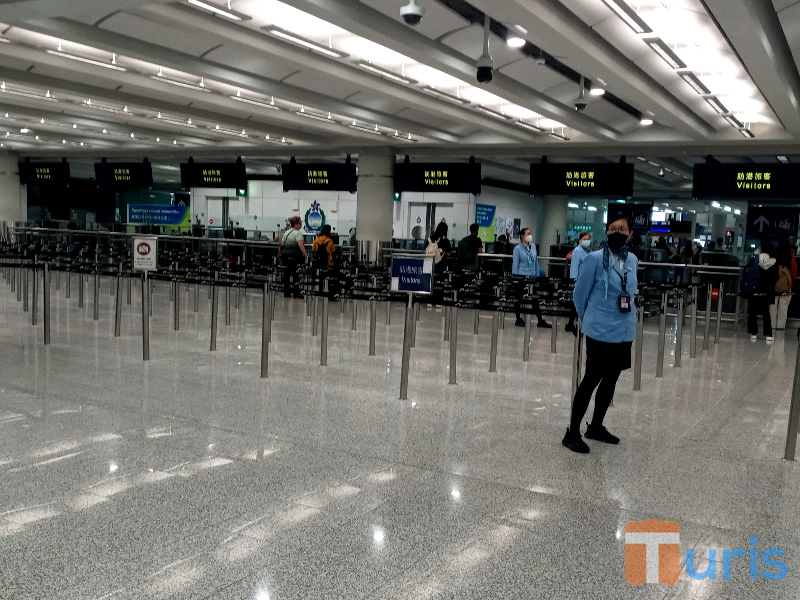
For the case when you are just transferring at Hong Kong airport and want to stay airside, you need to locate the transfer area entrance and proceed with the security check and X-ray scan. Once the procedure is complete, you will take the escalator or elevator to go up one level to Level 6. In most cases, the departure gate for your next connecting flight is located on Level 6. If you plan to spend your layover time in a lounge, note that all lounges are located airside, in the restricted area after you complete the security check and X-ray scan. You can read this article for more information about the lounges at Hong Kong airport.
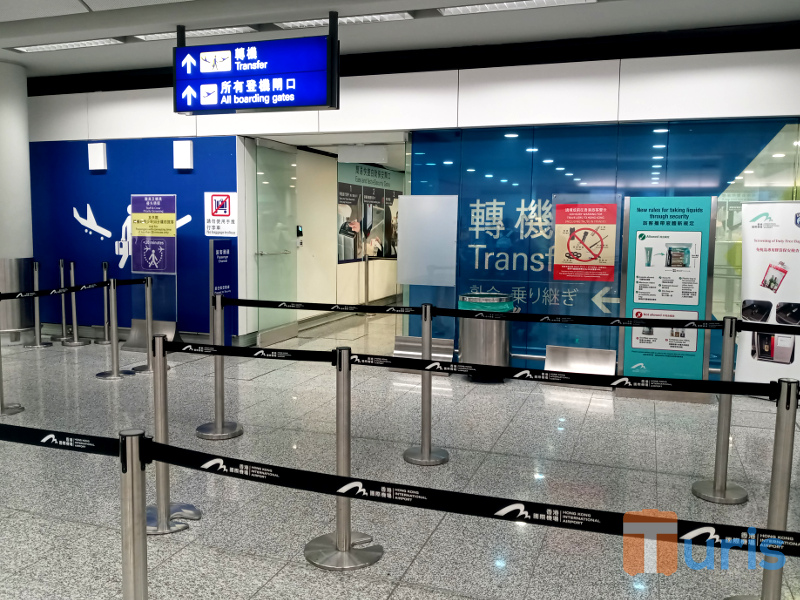
As the Terminal 1 building is quite massive, your departure gate can be located somewhat afar from the security check area. Spatial knowledge of the airport will help you navigate the terminal building and reach your departure gate with less hassle.
Hong Kong Airport Terminal 1 Departure Gate Map
In the figure below, you can see the locations of departure gates at Hong Kong airport Terminal 1. Dashed boxes in the figure divide the terminal into several sections. West Hall and East Hall in the figure are parts of main concourse. As you can see in the figure, there are three concourses associated with Terminal 1, namely Main Concourse, Satellite Concourse and Midfield Concourse.
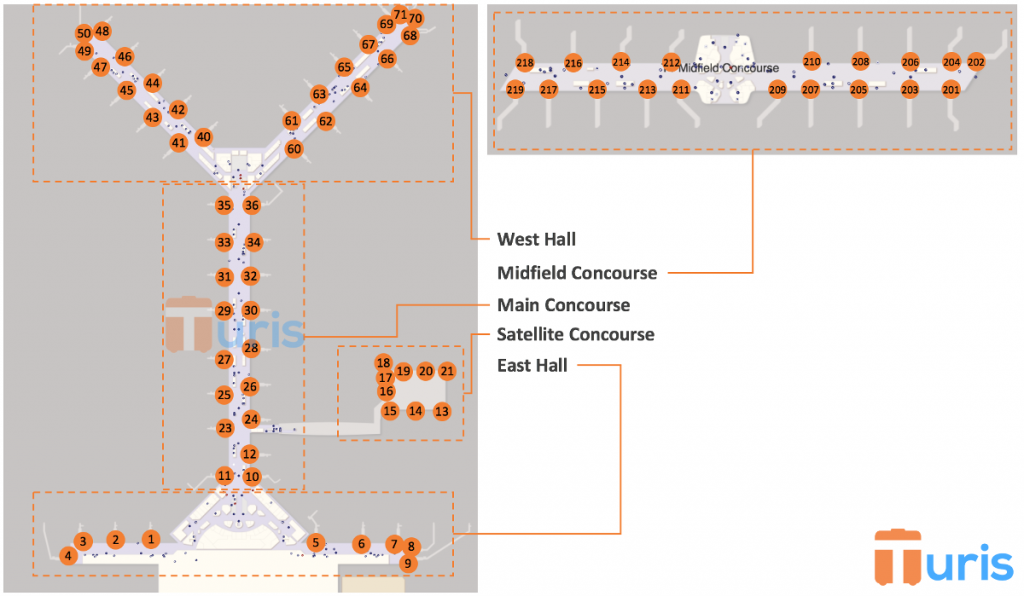
Some explanation about the locations of departure gates at Hong Kong Terminal 1 as shown in the map:
- Gate 1 to Gate 9 are located on Level 6 in the East Hall of the Main Concourse
- Gate 10, Gate 11, Gate 12, Gate 23 to Gate 36 are located on Level 6 in the central area of the Main Concourse
- Gate 13 to Gate 21 are located on Level 6 in the Satellite Concourse
- Gate 40 to Gate 71 are located on Level 6 in the West Hall of the Main Concourse
- Gate 201 to Gate 219 are located on Level 6 in the the Midfield Concourse
Now, here is the interesting part. What is shown on the map can be different with the gate number sign boards that you see when you’re roaming around the Terminal 1 building. One example is shown in the picture below.
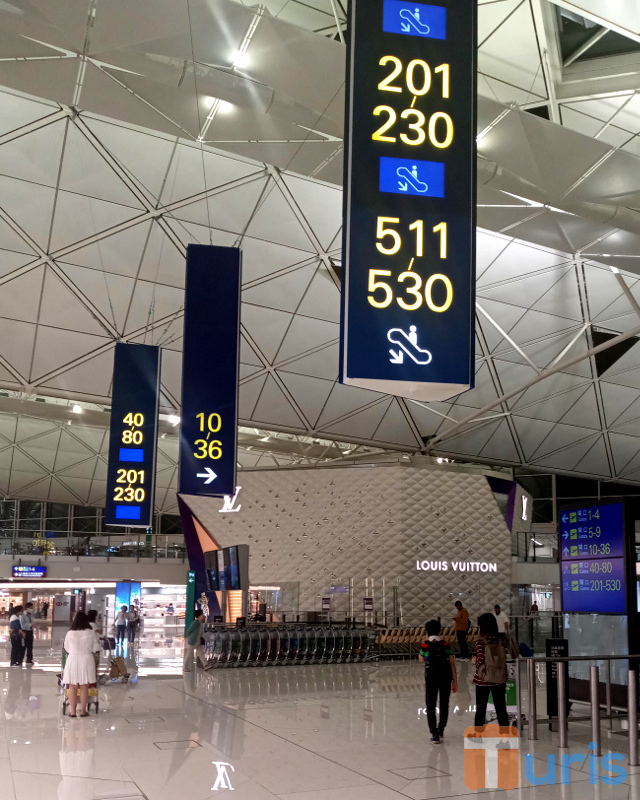
The view in the picture is the departure area on L6 in the East Hall of Terminal 1 main building. As you can see in the picture, the sign boards show direction to Gate 10-36, Gate 40-80, Gate 201-230, and Gate 511-530. Comparing the sign boards with the map of departure gates, you will notice some peculiarities on the gate numbering at Hong Kong airport. Here they are.
Gate 22 does not exist.
Gate 37 to Gate 39 do not exist and are skipped in the gate numbering. After Gate 36, the next gate is numbered to Gate 40.
Gate 51 to Gate 59 do not exist and are skipped in the gate numbering. After Gate 50, the next gate is numbered to Gate 60.
Gate 72 to Gate 80 do not exist and are skipped in the gate numbering.
The next gate number after Gate 71 is Gate 201 that is located in the Midfield Concourse.
Gate 220 to Gate 227 do not exist and are skipped in the gate numbering. After Gate 219, the next gate is numbered to Gate 228.
Gate 228, Gate 229, and Gate 230 are assembly points on L4 of Midfield Concourse to access aircraft located in the outfield near to Midfield Concourse using shuttle buses.
Gate 5xx are assembly points on L4 in the East Hall of Terminal 1 main building to access aircraft located in the outfield using shuttle buses. Available gate numbers are Gate 511-513 and Gate 520-524.
Note that for boarding gates that are not assembly points, passenger boarding bridges / jet bridges are used by passengers to board the aircraft. This means that all boarding gates on L6 are gates with passenger boarding bridges and all boarding gates on L4 are assembly points for passengers to wait for the buses to transport them to the aircraft.
If you’re wondering about the exact gate numbers for departure that are currently used at Hong Kong airport, here is the full list.
| Gate Number | Floor | Concourse |
|---|---|---|
| Gate 1 | L6 | Main concourse (East Hall) |
| Gate 2 | L6 | Main concourse (East Hall) |
| Gate 3 | L6 | Main concourse (East Hall) |
| Gate 4 | L6 | Main concourse (East Hall) |
| Gate 5 | L6 | Main concourse (East Hall) |
| Gate 6 | L6 | Main concourse (East Hall) |
| Gate 7 | L6 | Main concourse (East Hall) |
| Gate 8 | L6 | Main concourse (East Hall) |
| Gate 9 | L6 | Main concourse (East Hall) |
| Gate 10 | L6 | Main concourse (central) |
| Gate 11 | L6 | Main concourse (central) |
| Gate 12 | L6 | Main concourse (central) |
| Gate 13 | L6 | Satellite concourse |
| Gate 14 | L6 | Satellite concourse |
| Gate 15 | L6 | Satellite concourse |
| Gate 16 | L6 | Satellite concourse |
| Gate 17 | L6 | Satellite concourse |
| Gate 18 | L6 | Satellite concourse |
| Gate 19 | L6 | Satellite concourse |
| Gate 20 | L6 | Satellite concourse |
| Gate 21 | L6 | Satellite concourse |
| Gate 23 | L6 | Main concourse (central) |
| Gate 24 | L6 | Main concourse (central) |
| Gate 25 | L6 | Main concourse (central) |
| Gate 26 | L6 | Main concourse (central) |
| Gate 27 | L6 | Main concourse (central) |
| Gate 28 | L6 | Main concourse (central) |
| Gate 29 | L6 | Main concourse (central) |
| Gate 30 | L6 | Main concourse (central) |
| Gate 31 | L6 | Main concourse (central) |
| Gate 32 | L6 | Main concourse (central) |
| Gate 33 | L6 | Main concourse (central) |
| Gate 34 | L6 | Main concourse (central) |
| Gate 35 | L6 | Main concourse (central) |
| Gate 36 | L6 | Main concourse (central) |
| Gate 40 | L6 | Main concourse (West Hall) |
| Gate 41 | L6 | Main concourse (West Hall) |
| Gate 42 | L6 | Main concourse (West Hall) |
| Gate 43 | L6 | Main concourse (West Hall) |
| Gate 44 | L6 | Main concourse (West Hall) |
| Gate 45 | L6 | Main concourse (West Hall) |
| Gate 46 | L6 | Main concourse (West Hall) |
| Gate 47 | L6 | Main concourse (West Hall) |
| Gate 48 | L6 | Main concourse (West Hall) |
| Gate 49 | L6 | Main concourse (West Hall) |
| Gate 50 | L6 | Main concourse (West Hall) |
| Gate 60 | L6 | Main concourse (West Hall) |
| Gate 61 | L6 | Main concourse (West Hall) |
| Gate 62 | L6 | Main concourse (West Hall) |
| Gate 63 | L6 | Main concourse (West Hall) |
| Gate 64 | L6 | Main concourse (West Hall) |
| Gate 65 | L6 | Main concourse (West Hall) |
| Gate 66 | L6 | Main concourse (West Hall) |
| Gate 67 | L6 | Main concourse (West Hall) |
| Gate 68 | L6 | Main concourse (West Hall) |
| Gate 69 | L6 | Main concourse (West Hall) |
| Gate 70 | L6 | Main concourse (West Hall) |
| Gate 71 | L6 | Main concourse (West Hall) |
| Gate 201 | L6 | Midfield concourse |
| Gate 202 | L6 | Midfield concourse |
| Gate 203 | L6 | Midfield concourse |
| Gate 204 | L6 | Midfield concourse |
| Gate 205 | L6 | Midfield concourse |
| Gate 206 | L6 | Midfield concourse |
| Gate 207 | L6 | Midfield concourse |
| Gate 208 | L6 | Midfield concourse |
| Gate 209 | L6 | Midfield concourse |
| Gate 210 | L6 | Midfield concourse |
| Gate 211 | L6 | Midfield concourse |
| Gate 212 | L6 | Midfield concourse |
| Gate 213 | L6 | Midfield concourse |
| Gate 214 | L6 | Midfield concourse |
| Gate 215 | L6 | Midfield concourse |
| Gate 216 | L6 | Midfield concourse |
| Gate 217 | L6 | Midfield concourse |
| Gate 218 | L6 | Midfield concourse |
| Gate 219 | L6 | Midfield concourse |
| Gate 228 | L4 | Midfield concourse |
| Gate 229 | L4 | Midfield concourse |
| Gate 230 | L4 | Midfield concourse |
| Gate 511 | L4 | Main concourse (East Hall) |
| Gate 512 | L4 | Main concourse (East Hall) |
| Gate 513 | L4 | Main concourse (East Hall) |
| Gate 520 | L4 | Main concourse (East Hall) |
| Gate 521 | L4 | Main concourse (East Hall) |
| Gate 522 | L4 | Main concourse (East Hall) |
| Gate 523 | L4 | Main concourse (East Hall) |
| Gate 524 | L4 | Main concourse (East Hall) |
Navigation Guide when Transferring at Hong Kong Airport
Here we provide you with additional info to help you navigate the airport even faster when transferring at Hong Kong airport.
Security check
The security check areas are located on L5 in the West Hall and East Hall of Terminal 1 main building.
Entrance to security check area in the West Hall is located near to arrival gate 35 (L5) as shown in the figure below.
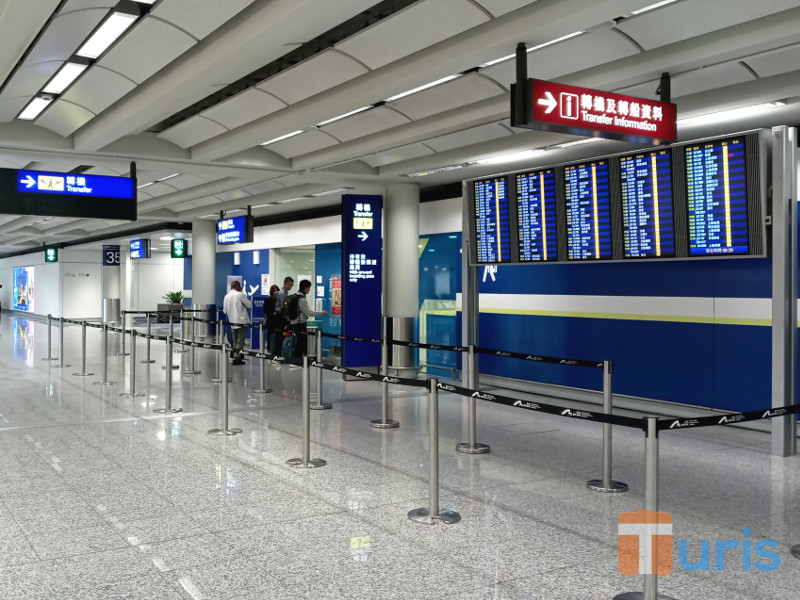
For security check area in the East Hall, the entrance to security check area is located near to arrival gate 5. Refer to the figure below for the view of security check entrance.
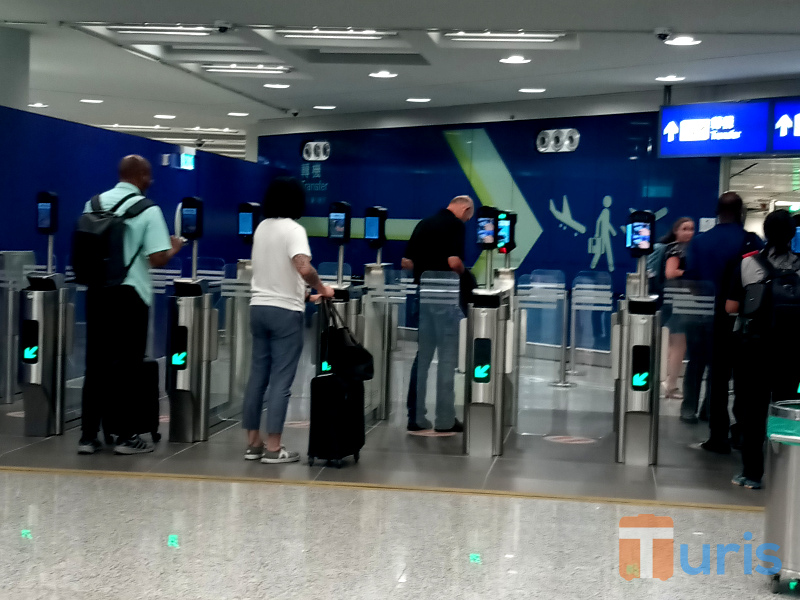
Sky Bridge entrance
If your boarding gate is one of Gate 13 to Gate 21, you will need to go to the Satellite Concourse. After finishing security check in Terminal 1 main building, locate the Sky Bridge entrance in the central area of the main concourse. The entrance is located near to Gate 24. Follow the direction, walk through the Sky Bridge, and locate your gate after arriving in the Satellite Concourse. Refer to the figure below for the view of Sky Bridge entrance.
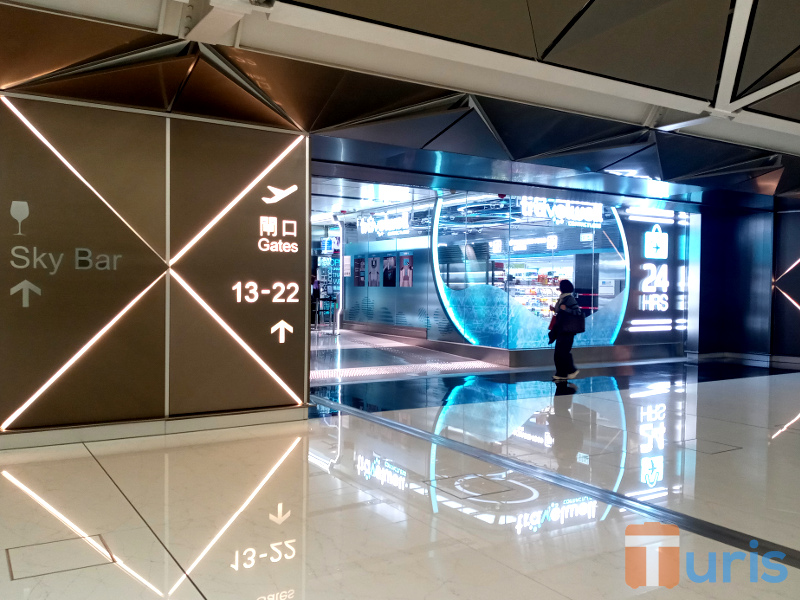
Using Automated People Mover (APM)
If you complete security check in the East Hall and your departure gate is located at distance from East Hall, you may need to take APM train to reach the concourse that contains the gate. In the image below, you can see the view on L6 of East Hall in front of the escalator with overhead sign boards showing the direction to departure gates.

For Gate 40-80, you can actually walk along the central area of the main concourse for around 10 minutes, which is following the direction to Gate 10-36. Alternatively, you can go downstairs to ride the APM train. For Gate 201-230, you have to take the APM train from the East Hall to the Midfield Concourse.
The APM platform is located on L1. Interval between trains is around 2-3 minutes.
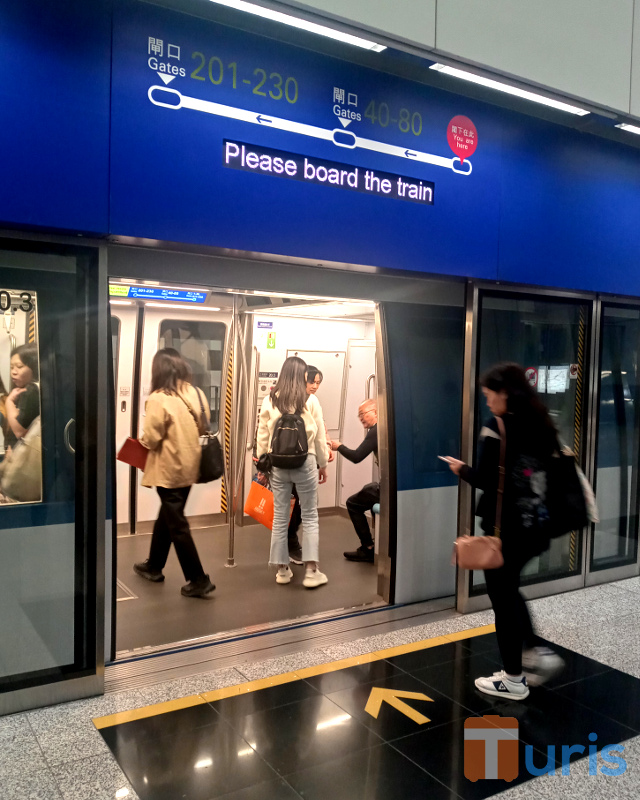
Face Recognition Boarding
Face recognition technology is widely used at Hong Kong Airport, including at the boarding gates. To board the plane, a passenger simply walk through a boarding gate that is equipped with face recognition camera. The camera scans passenger’s face and tries to match the biometric and boarding pass data previously stored during check in / transfer security procedure with liveness data (face scan). The gate will automatically open when the data matches.
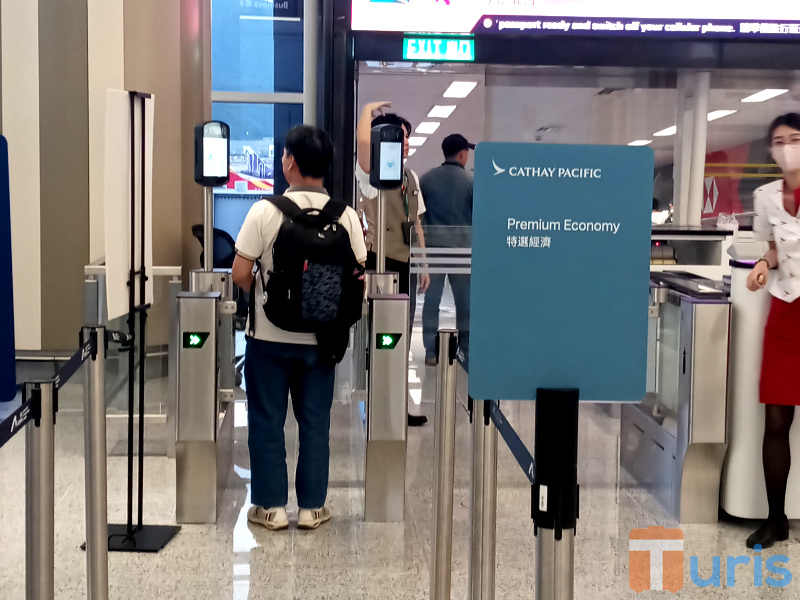
The facial recognition system at Hong Kong Airport expedites passenger boarding process compared to the conventional boarding process whereas passenger’s boarding pass is manually scanned by the ground staff at the boarding gate. It is not a huge surprise if Hong Kong Airport is one of traveler’s favorite airports due to its efficiency.
Frequently Asked Questions
Q: How many gates does Hong Kong airport have?
A: Despite having gate numbers greater than 500, gate numbering at Hong Kong airport does not follow ordered sequence. This means that the exact number of gates is less than the highest gate number.
The gates can be categorized into two types: gates with passenger boarding bridges / jet bridges and gates functioning as assembly points. The number of gates for each type is as follows:
- Gates with passenger boarding bridges: 77 gates (Gate 1-21, Gate 23-36, Gate 40-50, Gate 60-71, Gate 201-219)
- Gates functioning as assembly points: 11 gates (Gate 228-230, Gate 511-513, Gate 520-524)
In total, there are 88 gates at Hong Kong airport that are currently in use.
Q: Where is Hong Kong airport gate 35?
A: Gate 35 is located near to the West Hall of Terminal 1 main building. If you entered the security area in the West Hall, you will exit the area to the junction between the central area of Main Concourse and West Hall. Make a turn to the central area and find Gate 35 on your right. There is Plaza Premium lounge located near Gate 35 that is open until midnight.
Q: Where is Hong Kong airport gate 60?
A: Gate 60 on level 6 (L6) of Hong Kong airport is the nearest gate to entrance (stairs, elevators) to lounges popular to US passengers, such as The Centurion Lounge (American Express card holders), Chase Sapphire Lounge by The Club (Chase card holders) and the United Club lounge (temporarily closed). Gate 60 is located at the West Hall of Terminal 1. Refer to the gate map above for more precise location. Furthermore, in the figure below, you can see the sign board at the entrance to Gate 60-80 departure area.
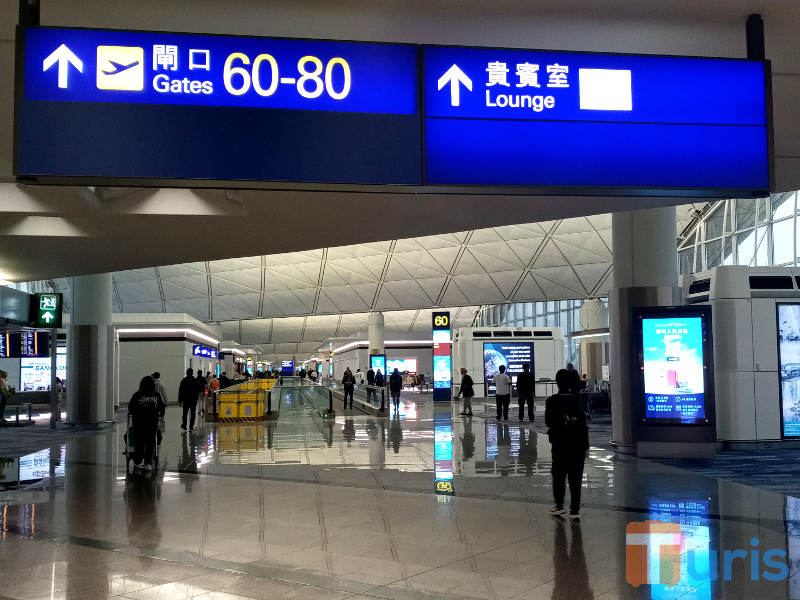
Q: Where is Hong Kong airport gate 212?
A: Gate 212 for departure is located on Level 6 of Midfield Concourse. If you transfer at Hong Kong airport and the boarding gate for your connecting flight is Gate 212, you need to take APM to Midfield Concourse after completing the security check. Entrance to Club Autus Lounge operated by Hong Kong Airlines (L7) is located to near to Gate 212.
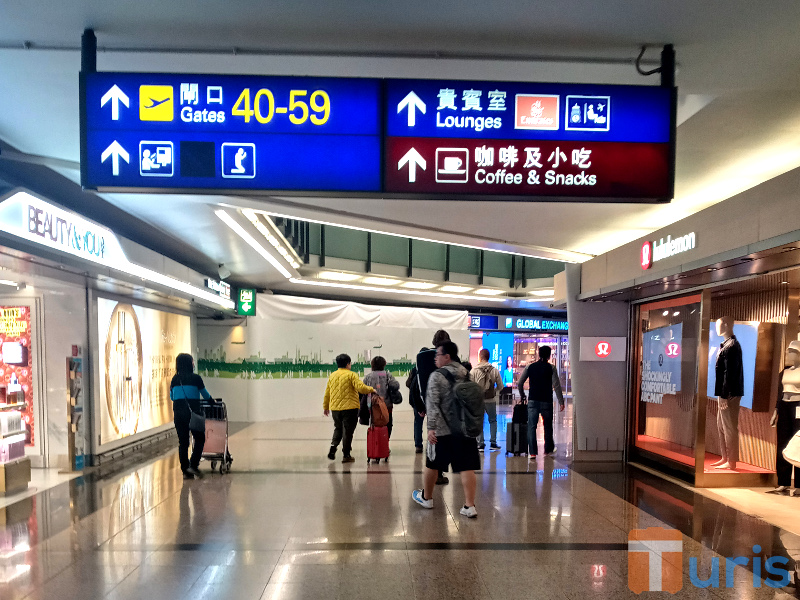
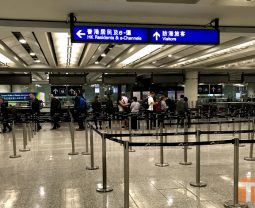
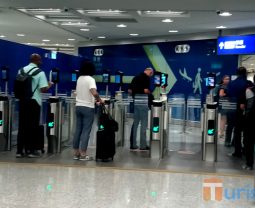
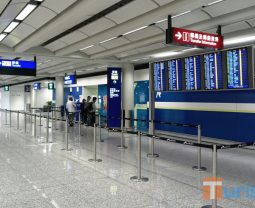
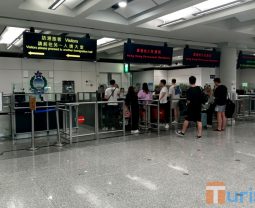
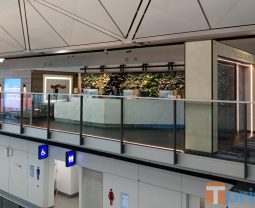
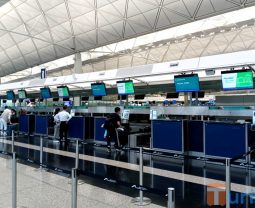
Hello. I shall arrive at around 11 pm with Cx 479 at Gate B8 at Terminal 1.
And I immediate leave with Cx 289 at Gate 47 same terminal.
My question: Where is the Gate B8, because I can`t find it?
And furthermore: Between arrival and departure is less than one hour. How far is the way from B8 to Gate 47? Can it be done in time?
with regard
CX479 TPE – HKG, I think you’re referring to departure Gate B8 at Taipei airport. There is no gate B8 at Hong Kong Airport. When there is no delay for your flight bound to Hong Kong, one hour transfer at Hong Kong airport is manageable. Usually it takes around 20-30 minutes to arrive at the boarding gate after disembarking.